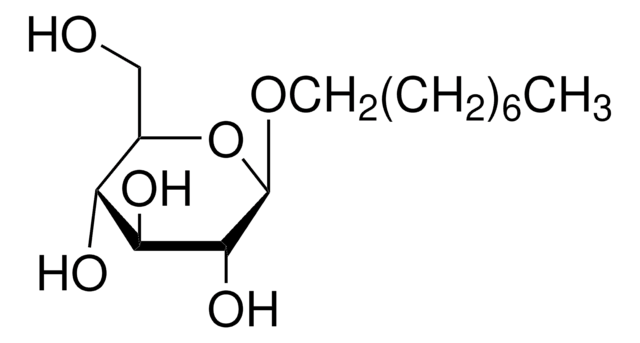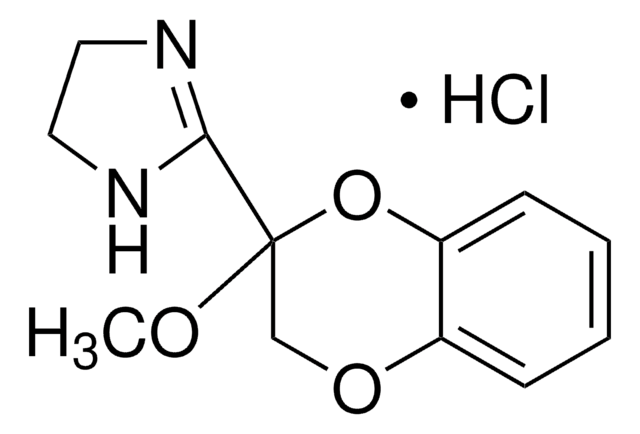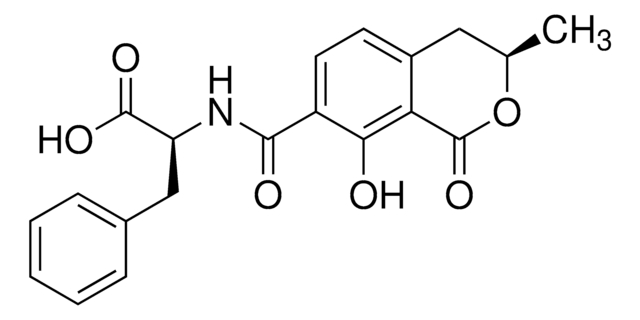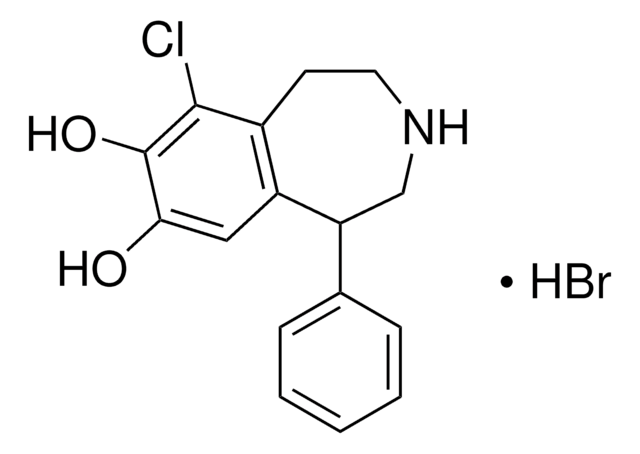P1639
Patulin
≥98.0% (HPLC)
Synonym(s):
Clavacin, Clavatin, Expansine, Gigantin, Leucopin, Mycoine C3, Terinin, 4-Hydroxy-4H-furo[3,2-c]pyran-2(6H)-one
About This Item
Recommended Products
Quality Level
Assay
≥98.0% (HPLC)
form
powder
solubility
water: 9-11 mg/mL
antibiotic activity spectrum
fungi
Mode of action
cell membrane | interferes
storage temp.
−20°C
SMILES string
OC1OCC=C2OC(=O)C=C12
InChI
1S/C7H6O4/c8-6-3-4-5(11-6)1-2-10-7(4)9/h1,3,7,9H,2H2
InChI key
ZRWPUFFVAOMMNM-UHFFFAOYSA-N
Looking for similar products? Visit Product Comparison Guide
General description
Application
- to study patulin contamination of bottled wine
- in DNA-damaging activity of patulin in Escherichia coli
- in molecular cloning and functional characterization of two CYP619 cytochrome P450s involved in biosynthesis of patulin in Aspergillus clavatus
Biochem/physiol Actions
Other Notes
Signal Word
Danger
Hazard Statements
Precautionary Statements
Hazard Classifications
Acute Tox. 2 Oral - Skin Irrit. 2
Storage Class Code
6.1A - Combustible acute toxic Cat. 1 and 2 / very toxic hazardous materials
WGK
WGK 3
Personal Protective Equipment
Regulatory Listings
Regulatory Listings are mainly provided for chemical products. Only limited information can be provided here for non-chemical products. No entry means none of the components are listed. It is the user’s obligation to ensure the safe and legal use of the product.
JAN Code
P1639-10MG:
P1639-25MG-PW:
P1639-BULK:
P1639-10MG-PW:
P1639-VAR:
P1639-5MG:
P1639-5MG-PW:
P1639-25MG:
Certificates of Analysis (COA)
Search for Certificates of Analysis (COA) by entering the products Lot/Batch Number. Lot and Batch Numbers can be found on a product’s label following the words ‘Lot’ or ‘Batch’.
Already Own This Product?
Find documentation for the products that you have recently purchased in the Document Library.
Customers Also Viewed
Our team of scientists has experience in all areas of research including Life Science, Material Science, Chemical Synthesis, Chromatography, Analytical and many others.
Contact Technical Service















